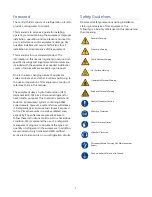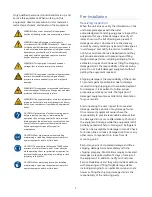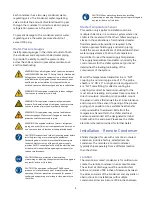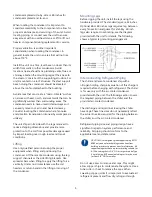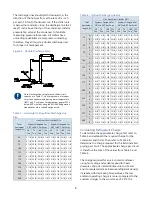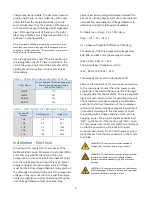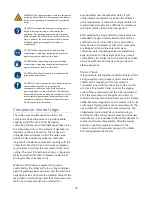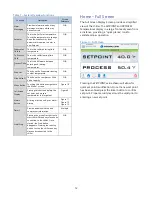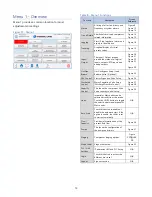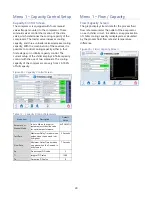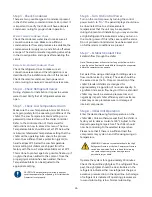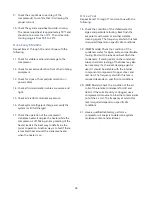
14
Menu 1 - Alarms
Alarms Active
When a critical system fault occurs, the controller
activates the HMI alarm handler. This forces the
alarm screen to appear and will display any current
faults.
Figure 11 – HMI Alarm Handler
Note: The above shows there are no alarms; if an alarm condition
were present, it would appear in this window.
Associated with an active alarm is an alarm horn that
sounds on and off every second. To silence this
alarm, press the ALARM SILENT button. If multiple
alarms are active at once, use the DOWN and UP
buttons to view all alarms. When no alarms are
active, the white portion of the display will be blank.
All alarms must be resolved and reset using the
RESET ALARM button.
Alarm Setup
The Alarm Setup screen allows changes to alarm
settings.
Figure 12 – Alarm Setup
Alarm Glycol
If the Chiller set point goes below 40°F (4.4°C), the
Glycol Warning screen will appear. The amount of
antifreeze will vary depending on the actual desired
operating conditions and should be enough to
provide freeze protection to temperatures 15°F
(8.3°C) colder than the coldest temperature
anticipated. Use only antifreeze solutions designed
for heat exchanger duty. Do not use automotive
antifreeze due to the potential for fouling that can
occur once its relatively short-lived inhibitors break
down. Please verify that proper Glycol is added and
“Accept” the Warning.
Figure 13 – Alarm Glycol


